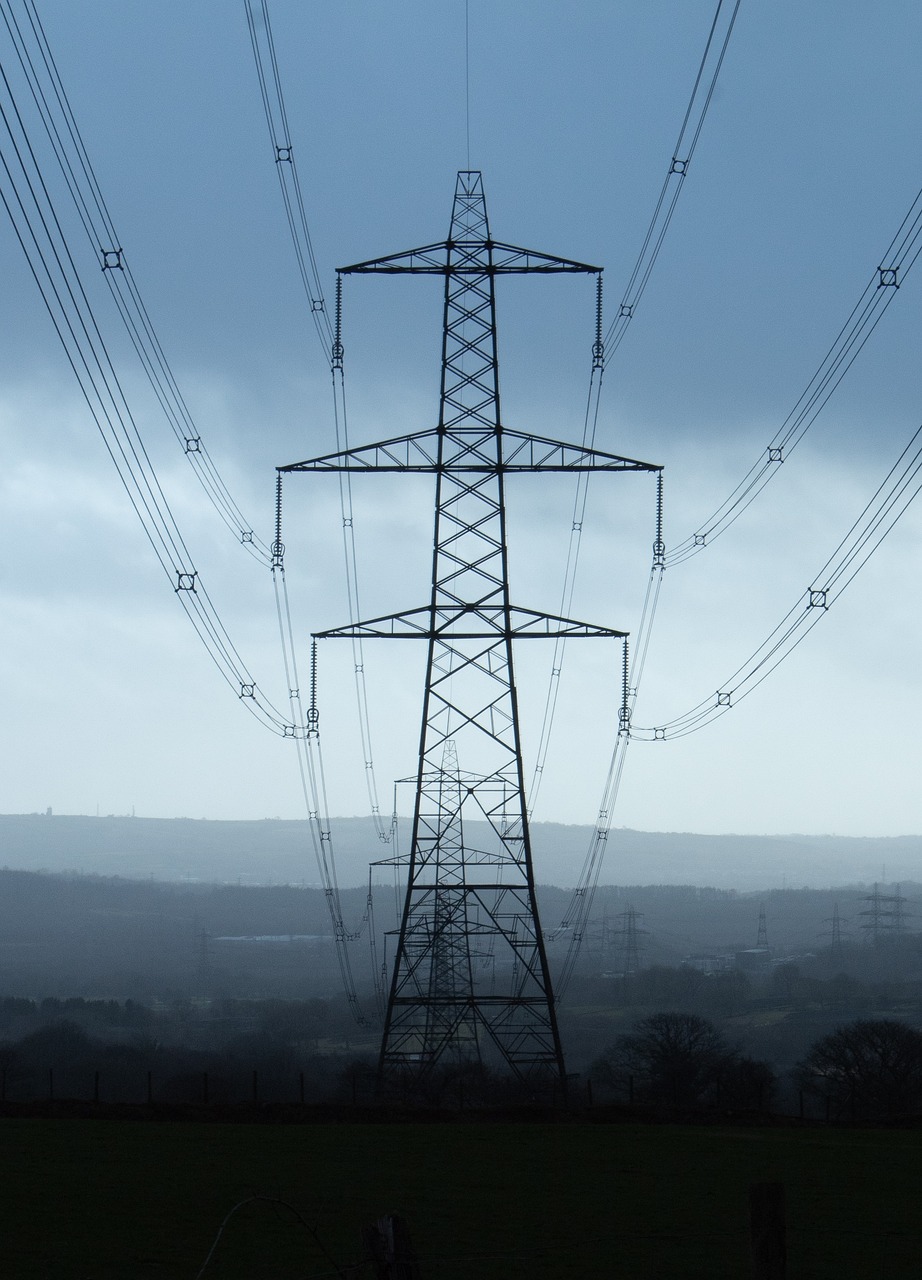The Risk of Ignoring It

Why Decarbonising Your Building and Improving Energy Efficiency is More Important Than Ever
As concerns about climate change, sustainability, and rising operational costs grow, decarbonising buildings and improving energy efficiency have become not only environmentally responsible choices but critical business decisions. This shift is driven by changing governmental regulations, financial incentives, and the rising costs of energy, all of which make it more important than ever for building owners, occupiers, and companies to rethink their approach to energy use and emissions.
There are new government targets and laws that must be adhered to, and there are consequences of non-compliance. There is an impact of rising energy costs, energy efficiency can mitigate them, and changing technology is enabling better solutions for both decarbonisation and energy savings.
Government Targets and Laws: The Push Toward Net Zero
The UK government has set ambitious targets to reach net zero carbon emissions by 2050, part of a global effort to combat climate change. These targets are not just aspirational—they are backed by legislation that imposes legal obligations on businesses, industries, and building owners to reduce carbon emissions significantly.
Key Legislation and Targets
- The Climate Change Act 2008 (2050 Target Amendment):
- This legally binds the UK to achieve net zero emissions by 2050. All sectors, including real estate, must play their part by decarbonising their operations.
- Energy Performance Certificate (EPC) Requirements:
- As of April 2023, the Minimum Energy Efficiency Standard (MEES) regulations require that all commercial buildings have an EPC rating of E or better. By 2030, this standard is expected to tighten to an EPC rating of B or better.
- Building Regulations Part L:
- This regulation governs the conservation of fuel and power in buildings. Updates in 2022 introduced stricter standards for new buildings, requiring improved insulation, higher efficiency HVAC systems, and renewable energy integration. Existing buildings undergoing major renovations must also meet higher standards for energy efficiency.
- Heat and Buildings Strategy:
- The UK’s Heat and Buildings Strategy aims to decarbonise homes and commercial properties by transitioning away from fossil-fuel-based heating systems like gas boilers to electric heat pumps and other renewable technologies. This aligns with broader government policies to phase out new fossil fuel heating systems by 2035.


Consequences of Non-Compliance
For building owners and companies, failing to comply with these regulations can lead to severe consequences:
- Fines and Penalties: Owners of non-compliant buildings may face fines, especially if their buildings fail to meet the required EPC rating.
- Decreased Property Value: Buildings that do not meet energy efficiency standards may become less attractive to buyers, tenants, and investors, significantly lowering their market value.
- Increased Operational Costs: Non-compliant buildings may face higher energy costs as inefficient systems continue to consume excess energy.
- Difficulty Leasing or Selling Properties: By 2030, commercial buildings with a poor EPC rating may become illegal to lease, making it harder for property owners to find tenants or sell their properties.
- Reputation Damage: In today’s market, sustainability is more than just a buzzword—it’s a competitive advantage. Failing to prioritise decarbonisation and energy efficiency could damage your company’s reputation, making it harder to attract eco-conscious clients, partners, and investors.
Rising Energy Costs: How Energy Efficiency Helps
Why Energy Prices Are Rising
- Global Market Volatility: Events like the COVID-19 pandemic and geopolitical tensions have disrupted global energy supply chains, causing price spikes. For example, the war in Ukraine has significantly impacted European gas supplies, pushing prices higher.
- Increased Demand for Energy: As the global economy grows, so too does the demand for energy. This creates a supply-and-demand imbalance, which inevitably drives up costs.
- Transition to Renewable Energy: While the transition to renewable energy is necessary for sustainability, the initial costs of upgrading infrastructure and investing in renewable technologies have also contributed to rising energy costs.
How Energy Efficiency Offsets Rising Costs
Investing in energy efficiency can drastically reduce your energy consumption, mitigating the impact of rising energy prices. Here’s how:
- Lower Energy Usage: Efficient mechanical and electrical systems—such as advanced HVAC, LED lighting, and building automation systems—reduce the overall amount of energy your building consumes. This results in immediate and long-term cost savings on energy bills.
- Peak Load Reduction: Energy-efficient buildings use energy more intelligently, particularly during peak demand times when energy prices are highest. By managing your building’s energy load, you can avoid expensive peak-time energy rates.
- Improved Building Performance: Retrofitting your building with energy-efficient systems not only lowers your energy bills but also improves the overall performance and lifespan of your mechanical and electrical systems. This reduces the need for expensive repairs or replacements down the line.
- Renewable Energy Integration: By incorporating renewable energy sources such as solar panels or heat pumps into your building’s energy strategy, you reduce your reliance on the grid and insulate yourself from future energy price increases.

Why do this?
Advancements in technology have opened up new possibilities for decarbonising buildings and improving energy efficiency. These innovations make it easier for businesses to meet both their operational needs and environmental goals.
- Smart Building Technologies
Smart building systems use sensors and automation to optimise energy usage across HVAC, lighting, and security systems. These systems allow for real-time monitoring of energy consumption, automatically adjusting settings to improve efficiency.
For example, a smart HVAC system can adjust the temperature based on occupancy levels, reducing energy waste when rooms are unoccupied. Similarly, automated lighting systems ensure that lights are only used when necessary, cutting down on energy usage.
- Renewable Energy Integration
Technological advancements in solar panels, wind turbines, and energy storage solutions like batteries have made it more cost-effective to integrate renewable energy sources into buildings. These technologies allow building owners to generate their own electricity and store it for later use, reducing reliance on traditional energy sources.
- Heat Pumps and Advanced HVAC Systems
Heat pumps, which transfer heat from the outside environment into a building, have emerged as a highly energy-efficient alternative to traditional heating systems. These systems can reduce energy consumption by up to 50%, offering both cost savings and reduced carbon emissions.
Similarly, advancements in HVAC technology, including variable refrigerant flow (VRF) systems and energy recovery ventilation (ERV) systems, provide more precise climate control while consuming less energy.
- Energy Management Software
Energy management systems (EMS) allow building owners to monitor and control their energy usage in real-time. This software can track energy consumption, detect inefficiencies, and provide actionable insights for improving energy performance. EMS platforms can also help buildings comply with energy regulations by generating reports and ensuring that systems are operating within legal parameters.
The need to decarbonise buildings and improve energy efficiency is not just about meeting regulatory requirements—it’s about future-proofing your business. The combination of government mandates, rising energy costs, and advances in technology make now the ideal time to invest in these upgrades.
The problems achieving this
Decarbonising buildings is an urgent priority for many companies looking to align with government regulations and reduce their environmental impact, but for many, the challenge is compounded by budget constraints. The need to transition away from fossil fuels, upgrade inefficient systems, and invest in renewable energy sources requires significant capital—something not all businesses can afford upfront.
The difficulty for many companies lies in balancing the immediate cost of decarbonisation projects with the long-term savings and environmental benefits. Implementing new technologies such as energy-efficient HVAC systems, renewable energy sources like solar panels, and improved insulation involves substantial initial investments. For businesses with limited budgets, this can be a daunting task, especially when cash flow is tight, and operational priorities require day-to-day financial attention. As a result, many businesses opt to delay these projects, relying on outdated systems that contribute to higher emissions and energy costs.
However, delaying decarbonisation efforts can lead to long-term financial and operational risks, including increasing energy bills as prices rise, potential non-compliance with emerging regulations, and missed opportunities for efficiency improvements that would save money in the long run. The good news is that there are solutions,. At Grey Man we are dedicated to allowing companies to make crucial upgrades whilst always being consciouos to strike the balance of the need for significant upfront capital, helping you future-proof your operations while staying financially stable.
As you have already done
At Grey Man Engineering, we specialise in helping businesses navigate this transition. Whether you’re looking to retrofit your building with energy-efficient systems, integrate renewable energy sources, or ensure compliance with the latest regulations, we’re here to guide you every step of the way.
Ready to decarbonise and reduce your energy costs? Contact us today for a comprehensive energy audit and tailored decarbonisation plan.

Unit 8a, Eastpark Trading Estate, Whitehall, Bristol BS5 7DR
0117 961 6116 | information@greymanengineering.co.uk
© Grey Man Engineering - 2025 - All Rights Reserved

